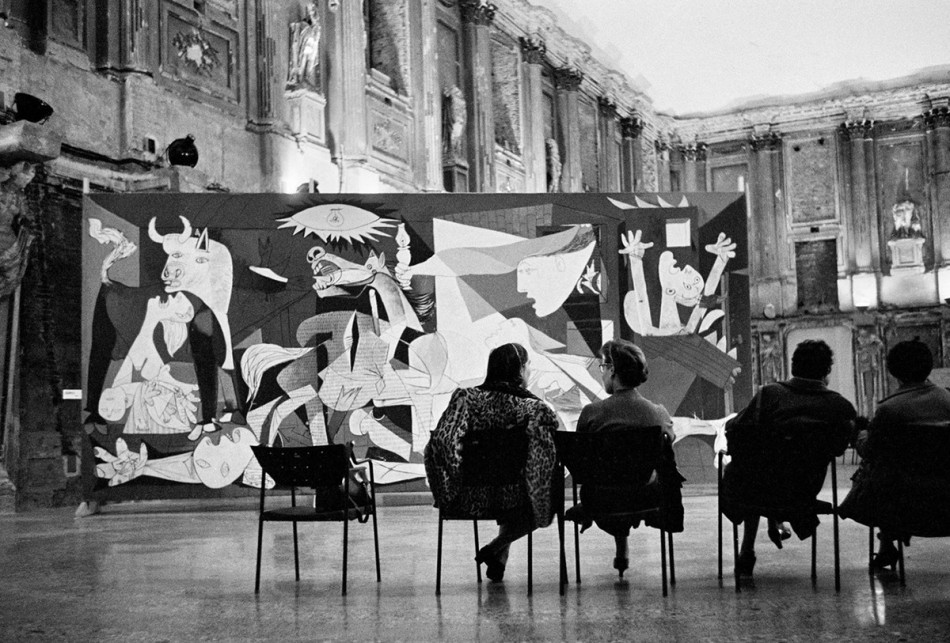On April 26th, 1937, twenty-four Nazi German fighters bombed the small town of Guernica in the Basque region of Spain. It was one of the most brutal attacks of the Spanish civil war — the estimated number of victims range from 250 to 1,600, and hundreds more were injured. Appalled by this latest attack, Picasso was propelled into action. The artist had already received a commission from the Spanish Republican government to decorate the Spanish Pavilion at the Paris International Exposition. The shocking attack on Guernica now provided Picasso with a perfect subject matter, and on May 1st, just days after the bombing, his first sketches were made.
Picasso was a strong opponent to the struggles which gripped Spain, and as he worked on his mural commented: “The Spanish struggle is the fight of reaction against the people, against freedom. My whole life as an artist has been nothing more than a continuous struggle against reaction and the death of art. How could anybody think for a moment that I could be in agreement with reaction and death? In the panel on which I am working, which I shall call Guernica, and in all my recent works of art, I clearly express my abhorrence of the military caste which has sunk Spain in an ocean of pain and death.”
The panel in question measured 3.5 metres (11 ft) tall and 7.8 metres (23 ft) wide, dimensions which even exceeded those of Picasso’s studio: the canvas had to be positioned sloping backwards, and its highest points could only be reached by attaching a brush to a long stick while standing atop a ladder. His mistress at the time, Slav photographer Dora Maar, would form a photographic record of the entire creative process. In creating Guernica, Picasso chose to omit the cause of the massacre, representing only the death and carnage that remains. The scene is dominated by a horse and a bull — important symbols in Spanish culture — while human figures scream in pain and weep over the victims. The work has all the immediacy of a newspaper report, and in opting for monochromatic tones Picasso invokes the gritty realism of photojournalism.
Guernica was initially exhibited in July 1937 at the Spanish Pavilion of the Paris International Exposition, where it quickly gained the controversial attention Picasso had hoped to stir, especially when placed amongst other more staid works celebrating technological advancement. Although a personal response to a particular event, Guernica would soon be appreciated as an allegory of the horrors of war in general. The painting was the setting for peaceful anti-war vigils during the Vietnam war and is now often used as a symbol for the Basque nationalism movement.
Picasso refused to allow the work to return to Spain until the country became a republic, and Guernica spent most of the thirty years which followed the Paris exhibition touring Europe and the United States. The painting now resides at the Reina-Sofia Museum in Madrid, after returning to Europe in 1981, following the fall of Franco’s regime. (Picasso had insisted the painting shall not be return to Spain while the dictator was in power.) Guernica was reluctantly bequeathed back to Spain by The Museum of Modern Art, New York, where it had once formed the centrepiece of a Picasso retrospective which opened six weeks after the Nazi invasion of Poland. At this time, Picasso was continuing to work in exile in Paris, where German soldiers would occasionally be sent to search his studio. One day, an officer noticed a reproduction of Guernica lying on the table, and enquired to the artist casually, “Did you do this?” To which Picasso, not one to forget, quipped, “No, you did.”
